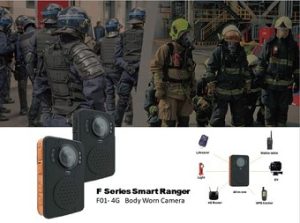
RT Stream International, (or RTS) has successfully integrated its RTS F01 products for mobile emergency response systems. The RTS F01 not only provides video storage, voice transmission of digital video, and wireless walkie-talkies, but also provides a “mission management mode” function to protect rescuers’ lives.
The F01 is carried or worn by the rescue personnel, and if the device does not move within 25 seconds after entering the mission management mode, it will emit a siren sound and display an alarm icon in the app; at this point the commander can receive an emergency signal from the rescue personnel who may be in trouble. If the rescue personnel continues to remain still, the F01 will keep alarming for 13 seconds at 25-second intervals until the device is moved. During that alarm period, the F01 will also provide a yellow flashing light, to enable other rescue team members to more easily find their companion who needs help.
After entering in the “mission management mode,” the F01 will turn on the timer function. Once the rescue personnel enters the disaster relief site with the F01 for 25 minutes, it will also sound an alarm to remind the rescue personnel to leave quickly and to avoid SCBA deficiency or respiratory tract injury.
The F01 can be connected to the H01 (physiological patch) through Bluetooth. If the rescue personnel might be sick, the H01 on the chest will allow the F01 commander to check his heartbeat through the rescue app and display his status with an alarm icon if any health problem is detected.
When at low battery level, the F01 device will still perform the emergency alarm-sound emission and display a ‘low-battery’ icon on the device to avoid shutting down due to lack of power, in case the rescue personnel does not notice it.
The RTS mobile emergency response system is a feature device with functions other than those already mentioned above. For example, even if the commander cannot reach the scene, he can instruct the first-line rescue personnel through the remote command in order to achieve the most effective rescue operation, improving the survival probability at the accident scene.












